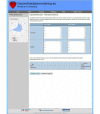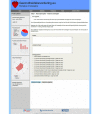Supporting health care professionals to improve the processes of shared decision making and self-management in a web-based intervention: randomized controlled trial
- PMID: 25337988
- PMCID: PMC4259881
- DOI: 10.2196/jmir.3170
Supporting health care professionals to improve the processes of shared decision making and self-management in a web-based intervention: randomized controlled trial
Abstract
Background: Research to assess the effect of interventions to improve the processes of shared decision making and self-management directed at health care professionals is limited. Using the protocol of Intervention Mapping, a Web-based intervention directed at health care professionals was developed to complement and optimize health services in patient-centered care.
Objective: The objective of the Web-based intervention was to increase health care professionals' intention and encouraging behavior toward patient self-management, following cardiovascular risk management guidelines.
Methods: A randomized controlled trial was used to assess the effect of a theory-based intervention, using a pre-test and post-test design. The intervention website consisted of a module to help improve professionals' behavior, a module to increase patients' intention and risk-reduction behavior toward cardiovascular risk, and a parallel module with a support system for the health care professionals. Health care professionals (n=69) were recruited online and randomly allocated to the intervention group (n=26) or (waiting list) control group (n=43), and invited their patients to participate. The outcome was improved professional behavior toward health education, and was self-assessed through questionnaires based on the Theory of Planned Behavior. Social-cognitive determinants, intention and behavior were measured pre-intervention and at 1-year follow-up.
Results: The module to improve professionals' behavior was used by 45% (19/42) of the health care professionals in the intervention group. The module to support the health professional in encouraging behavior toward patients was used by 48% (20/42). The module to improve patients' risk-reduction behavior was provided to 44% (24/54) of patients. In 1 of every 5 patients, the guideline for cardiovascular risk management was used. The Web-based intervention was poorly used. In the intervention group, no differences in social-cognitive determinants, intention and behavior were found for health care professionals, compared with the control group. We narrowed the intervention group and no significant differences were found in intention and behavior, except for barriers. Results showed a significant overall difference in barriers between the intervention and the control group (F1=4.128, P=.02).
Conclusions: The intervention was used by less than half of the participants and did not improve health care professionals' and patients' cardiovascular risk-reduction behavior. The website was not used intensively because of time and organizational constraints. Professionals in the intervention group experienced higher levels of barriers to encouraging patients, than professionals in the control group. No improvements were detected in the processes of shared decision making and patient self-management. Although participant education level was relatively high and the intervention was pre-tested, it is possible that the way the information was presented could be the reason for low participation and high dropout. Further research embedded in professionals' regular consultations with patients is required with specific emphasis on the processes of dissemination and implementation of innovations in patient-centered care.
Trial registration: Netherlands Trial Register Number (NTR): NTR2584; http://www.trialregister.nl/trialreg/admin/rctview.asp?TC=2584 (Archived by WebCite at http://www.webcitation.org/6STirC66r).
Keywords: RCT; Web-based intervention; barriers; health professionals; self-management.
Conflict of interest statement
Conflicts of Interest: None declared.
Figures
References
-
- Elwyn G, Edwards A, Britten N. "Doing prescribing": how might clinicians work differently for better, safer care. Qual Saf Health Care. 2003 Dec;12 Suppl 1:i33–6. http://qhc.bmj.com/cgi/pmidlookup?view=long&pmid=14645747 - PMC - PubMed
-
- Parcel GS, Kok G, Gottlieb NH. Planning Health Promotion Programs: An Intervention Mapping Approach. San Francisco: Jossey-Bass; 2011.
Publication types
MeSH terms
Associated data
LinkOut - more resources
Full Text Sources
Other Literature Sources






